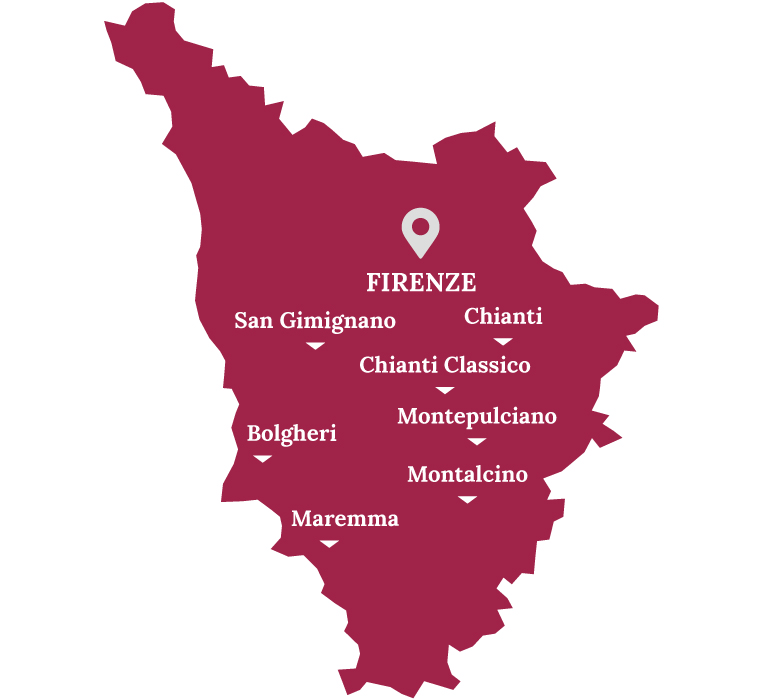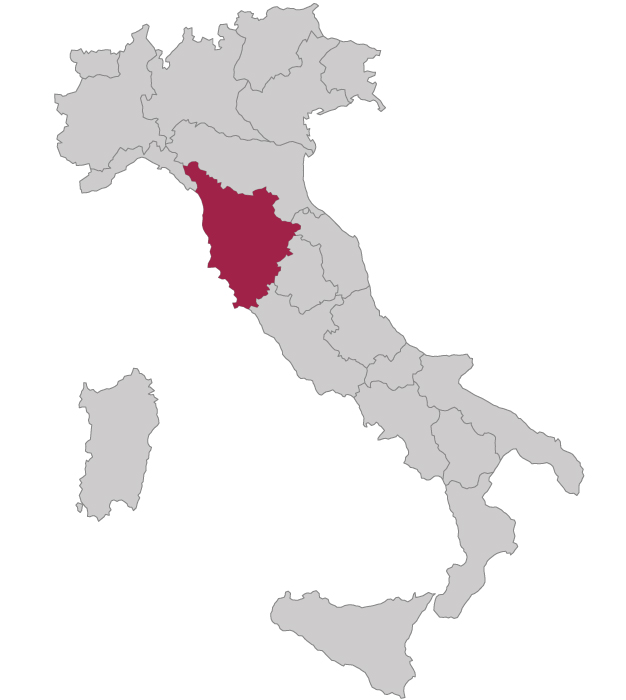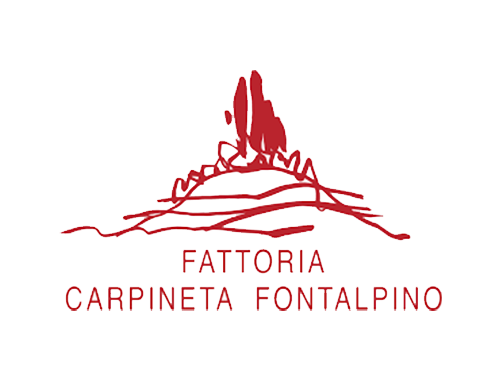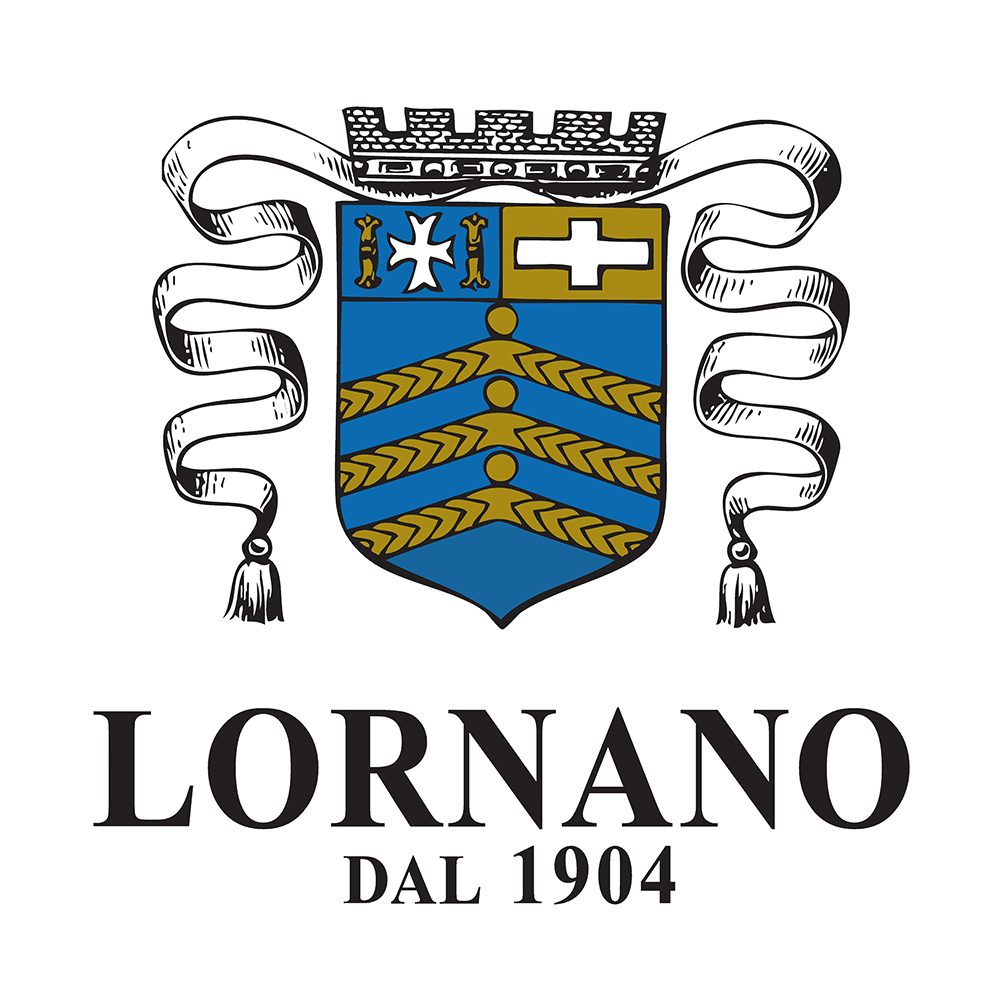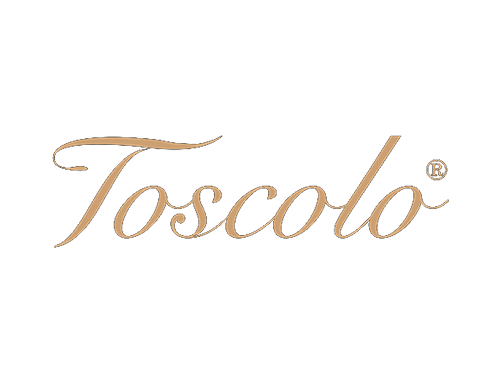The world’s first legal document defining the production zone of a wine was drawn up in Chianti. It was an edict issued by Cosimo III, Grand Duke of Tuscany, in 1716. This not only officially recognized the boundaries of the Chianti district, but even set up a congregazione that was to supervise production and ensure the boundaries and standards were respected. In other words, a perfectly thorough precursor to the Chianti DOC of 1967 – and DOCG of 1984. The history of Chianti goes back even further: as a territory, the name is documented since the early 1200s; as a wine, since 1398. There are two theories – though some might call them legends – on how the name originated: either from the Latin word clangor, meaning “noise,” from the commotion produced by the hunting parties that scoured the region’s thick, plentiful forests; or from the Etruscan word for water, clante (also a common Etruscan family name in these parts). Chianti is rich in water resources, which are extremely beneficial to the vineyards; and viticulture itself was introduced here by the Etruscans. The area is entirely hilly, and its hub – geographically and historically – is situated between Florence and Siena: this is what is known as Chianti Classico, a distinct DOCG zone since 1996. The vineyards comprised in the broader Chianti appellation lie not only in these two provinces but in four others: Arezzo, Pisa, Pistoia, Prato. In fact, Chianti tout court is flanked by eight distinct DOCG subzones. Chianti’s major variety has always been Sangiovese. Sangiovese may rightly be considered the perfect expression of its soil, thanks to an exceptional sensibility to microclimate and terroir. Arguably, no other grape reflects quite so closely the variations and nuances of the ground that nurtures it. Sandstone, for example, makes for the wine’s floral bouquet; limestone makes it veer towards berry notes; whereas a scent of fresh tobacco reminds one of its tuffaceous terrain. One trait that is found in the wine, no matter the location, is a fragrance of violets. This is so characteristic of Chianti that it was included in the DOCG regulations.The world’s first legal document defining the production zone of a wine was drawn up in Chianti. It was an edict issued by Cosimo III, Grand Duke of Tuscany, in 1716. This not only officially recognized the boundaries of the Chianti district, but even set up a congregazione that was to supervise production and ensure the boundaries and standards were respected. In other words, a perfectly thorough precursor to the Chianti DOC of 1967 – and DOCG of 1984. The history of Chianti goes back even further: as a territory, the name is documented since the early 1200s; as a wine, since 1398. There are two theories – though some might call them legends – on how the name originated: either from the Latin word clangor, meaning “noise,” from the commotion produced by the hunting parties that scoured the region’s thick, plentiful forests; or from the Etruscan word for water, clante (also a common Etruscan family name in these parts). Chianti is rich in water resources, which are extremely beneficial to the vineyards; and viticulture itself was introduced here by the Etruscans. The area is entirely hilly, and its hub – geographically and historically – is situated between Florence and Siena: this is what is known as Chianti Classico, a distinct DOCG zone since 1996. The vineyards comprised in the broader Chianti appellation lie not only in these two provinces but in four others: Arezzo, Pisa, Pistoia, Prato. In fact, Chianti tout court is flanked by eight distinct DOCG subzones. Chianti’s major variety has always been Sangiovese. Sangiovese may rightly be considered the perfect expression of its soil, thanks to an exceptional sensibility to microclimate and terroir. Arguably, no other grape reflects quite so closely the variations and nuances of the ground that nurtures it. Sandstone, for example, makes for the wine’s floral bouquet; limestone makes it veer towards berry notes; whereas a scent of fresh tobacco reminds one of its tuffaceous terrain. One trait that is found in the wine, no matter the location, is a fragrance of violets. This is so characteristic of Chianti that it was included in the DOCG regulations.
Map of the region
